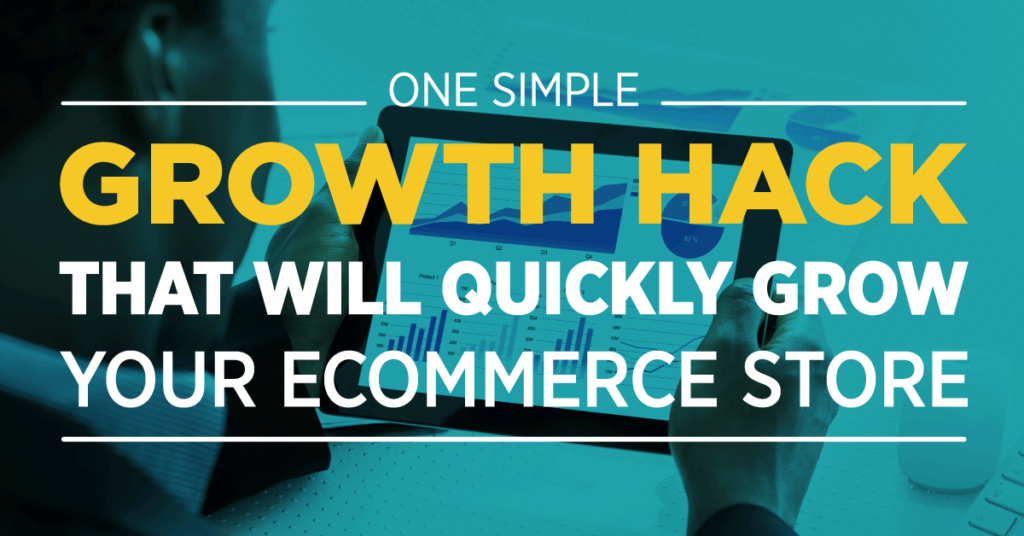Let’s face it, you’d go to great lengths to increase sales, but you’re overwhelmed at the volume of tactics and tasks you’re supposed to do to grow your business. What if we told you you could increase your annual sales by 7% just by paying better attention to your business?
While all e-commerce stores would love to make more efficient use of their time while simultaneously boosting their sales, this can often feel like an impossible pipe dream. The good news for you is that it’s entirely possible.
More Money, More Problems?
One simple truth of running an e-commerce business is the more successful you are, the more your responsibilities multiply over time.
What starts off as a simple site to sell products or services can quickly grow into a larger company requiring payroll management, marketing, fulfillment, and any number of other necessary but secondary tasks to keep the business running smoothly.
If you’re feeling the pinch as you grow, then it’s time to start working smarter. In other words, what secondary responsibilities can you delegate or offload to third-party service providers?
To quantify the impact this step has on a merchant’s top line sales, we took a look at the sales performance of our Signifyd merchant community over the course of one year after enabling our zero fraud liability service that essentially eliminates fraud losses and extensive manual review of orders.
The merchants we looked at were all established merchants (not startups with unnatural growth) ranging from SMBs with under $1M in annual sales to large enterprise merchants with over $1B in annual sales.
We compared same-month sales for each merchant from when they went live with our service to one year later and also month-to-month growth adjusted for seasonality to accurately reflect the merchant’s business over time.
What did we discover? Merchants grew an average of 7.13% with all other elements of their business remaining equal. They were able to dedicate time previously spent on manual fraud prevention and review of orders to more primary tasks, proving that narrowing focus truly can increase the bottom line!
Simplify to Narrow Your Focus
The notion of “focus” as the ultimate growth hack is not a new one. When Paul Graham recently stepped down as the president of tech startup incubator Y Combinator, he stressed the importance of focus when it came to growing companies like Airbnb, Stripe, and ZenPayroll (now Gusto).
Erik Huberman, the CEO of digital media startup Hawke Media, has said companies shouldn’t try to build all new technologies from the ground up but rather rely on “existing technologies that already make your job easy.”
Another prominent tech executive has even limited his wardrobe to a closet full of the same gray t-shirts and hoodies so he can focus what truly matters to him and the community he has built.
While you may not be in a startup incubator or a digital media exec working with e-commerce merchants or Mark Zuckerberg, the same rules apply.
In an age of endless distractions, it’s becoming more and more important for business owners and entrepreneurs to focus on core competencies. This is especially true in the world of online commerce with sales in North America alone expected to grow 36% from an estimated $539 billion in 2015 to $721 billion by 2018.
Small companies have the ability to more easily—though not necessarily efficiently—manage all facets of the organization from one central point. If the problem is order fulfillment or inventory management, a single person can step in and get the job done.
As order volume increases, though, so too does the need for additional time or resources to address the problems one person may have been able to handle when the company was small. What started as an insignificant side project for the CEO or marketing lead now becomes a full-time job, stealing the focus away from running and growing the company.
The chart below from late 2015 reflects specific pain points of our clients at Signifyd regarding e-commerce fraud. Although it might be expected that all of our clients would put fraud losses at the top of their list of pain points when speaking to us about our solution, that wasn’t not the case.
Here you can see the larger companies (those considered the top ten thousand largest online properties) rank operational efficiencies as their primary pain points, compared to the much smaller online properties that might still be able to manually review each order without being overwhelmed by the sheer volume.
| Alexa Rank | Primary Pain Point | Secondary Pain Point |
| 0-10k | Operational Efficiencies | Total Cost of Ownership |
| 10k-100k | Performance at Scale | Impact on Good Users |
| 100k-500k | Cost of Solution | Performance at Scale |
| 500k-1M | Fraud Losses | Cost of Solution |
Where Do You Start?
Of course, cost and performance will always carry a lot of weight when you’re evaluating which tools to use within your organization.
But the question we often hear merchants ask as their scale begins to surpass their current capacity is, “Do I hire more people and buy bigger tools to keep doing what I’ve been doing? Or can I streamline to get back to why I started the company in the first place?”
These merchants are asking us to help them efficiently manage at least one part of their day-to-day operations so they can shift focus back on their core business goals. In many cases, efficiency that allows employees to keep their attention on primary tasks ranks just as high as cost and performance when a company is considering expenditures to grow their business.
Fortunately, the options for using a third party to shoulder some of the burden are endless. Just look at the app stores of Magento, Shopify, Bigcommerce, etc.
Running an e-commerce business can feel overwhelming at times, but you don’t have to do it by yourself. Focus isn’t exclusive to the tech luminaries of the world, or those with deep pockets. With the right tools and the right partners, we can all achieve the kind of focus that will help increase our sales and keep our company on a steady path to continued growth.



1 thought on “One Simple Growth Hack That Will Quickly Grow Your Ecommerce Store”
“You don’t have to do it yourself” hmm good tip. I would add that you have to do it yourself at first to get to grips with the actual process though.
Great post,
Thanks for sharing.